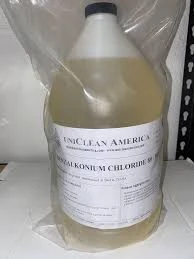anionic polyacrylamide flocculant
Anionic Polyacrylamide Flocculant A Comprehensive Overview
Anionic polyacrylamide (APAM) flocculant is a synthetic polymer widely used in various industries for its exceptional flocculation properties. With its unique chemical structure, this flocculant plays a critical role in processes such as water treatment, mining, and papermaking, making it an indispensable material in modern industrial applications.
What Is Anionic Polyacrylamide?
Anionic polyacrylamide is a water-soluble polymer formed from acrylamide monomers, which are polymerized in the presence of anionic groups. These anionic functional groups enhance the flocculating ability of the polymer, allowing it to bind with positively charged particles in a solution. This characteristic makes APAM particularly effective for removing suspended solids and improving water clarity.
Applications of Anionic Polyacrylamide
1. Water Treatment One of the primary applications of anionic polyacrylamide is in wastewater treatment. In municipal and industrial wastewater treatment plants, APAM is employed to aggregate fine particulates and organic matter, facilitating their removal through sedimentation. The flocculation process reduces the need for chemical coagulants and significantly improves the efficiency of water treatment operations.
2. Mining Industry In mining operations, APAM is used to facilitate the separation of valuable minerals from ore. The flocculant helps to settle the solid particles, enhancing the recovery of minerals during processes such as flotation and thickening. By optimizing mineral recovery, APAM contributes to more efficient and sustainable mining practices.
3. Papermaking The papermaking industry utilizes anionic polyacrylamide in the formation of sheets. APAM assists in the aggregation of fiber fines, leading to improved sheet formation and increased paper strength. Additionally, the improved drainage properties of the slurry can result in lower energy consumption during the drying process.
4. Agriculture Anionic polyacrylamide is also employed in agriculture to enhance soil moisture retention and reduce erosion. By applying APAM to soil surfaces, farmers can improve water infiltration and reduce runoff, leading to more effective irrigation practices. This application is particularly beneficial in arid regions where water conservation is crucial.
anionic polyacrylamide flocculant

5. Oil and Gas Industry In hydraulic fracturing and oil recovery processes, APAM serves as a thickening agent, enhancing the viscosity of fracturing fluids. This ensures better proppant transport and improves the efficiency of oil recovery. As the demand for energy increases, the role of APAM in this sector becomes more critical.
Benefits of Using Anionic Polyacrylamide
The benefits of using anionic polyacrylamide flocculant are manifold. Firstly, it provides excellent flocculation and sedimentation properties, leading to cleaner effluents in water treatment applications. Secondly, APAM is cost-effective, often reducing the need for more expensive chemical alternatives. Thirdly, its versatility allows it to be tailored for specific applications, with varying molecular weights and charge densities available to meet the unique demands of different industries.
Moreover, APAM is generally safe to handle, but users must comply with safety regulations to mitigate any potential health risks associated with acrylamide. Additionally, proper usage and dosage are essential to maximize the efficiency of the flocculant while minimizing environmental impact.
Environmental Considerations
While anionic polyacrylamide is deemed safe for many applications, environmental considerations must be taken into account. The degradation of APAM in aquatic environments can lead to the release of acrylamide, which is classified as a potential neurotoxin. As a result, ongoing research aims to develop more environmentally friendly alternatives and improve the biodegradability of polyacrylamide products.
Conclusion
Anionic polyacrylamide flocculant represents a vital component in modern industrial practices, particularly in water treatment, mining, papermaking, agriculture, and the oil and gas sector. Its ability to efficiently aggregate particles and enhance process efficacy makes it an essential material. As industries continue to evolve and face greater environmental challenges, the development of safer and more sustainable flocculants will be crucial for balancing industrial efficiency with ecological responsibility. Embracing innovations in polymer chemistry will ensure that APAM, and its potential alternatives, can meet the needs of an increasingly demanding world while minimizing environmental impact.
-
2-Phosphonobutane-1,2,4-Tricarboxylic Acid: Scale & CorrosionNewsAug.29,2025
-
Premium Isothiazolinones | Broad-Spectrum Biocidal SolutionsNewsAug.28,2025
-
LK-319 Special Scale And Corrosion Inhibitor For Steel Plants: Advanced Solutions for Industrial Water SystemsNewsAug.22,2025
-
Flocculant Water Treatment: Essential Chemical Solutions for Purification ProcessesNewsAug.22,2025
-
Isothiazolinones: Versatile Microbial Control Agents for Industrial and Consumer ApplicationsNewsAug.22,2025
-
Scale Inhibitor: Key Solutions for Water System Scale PreventionNewsAug.22,2025





